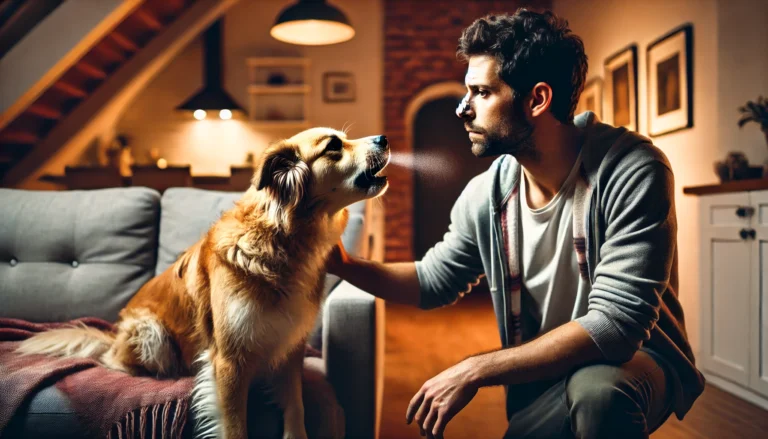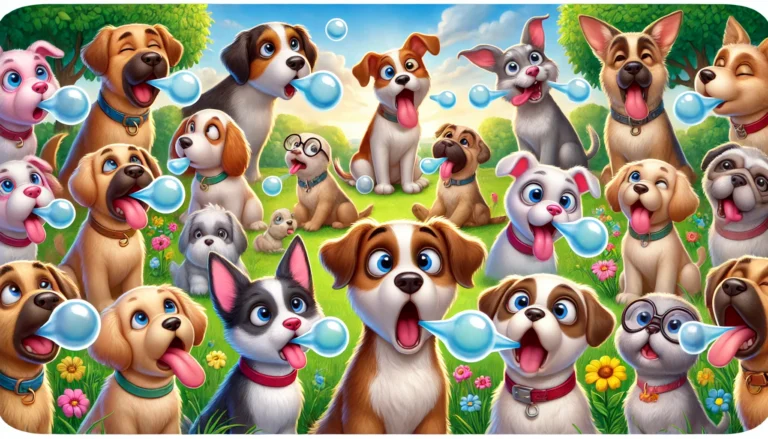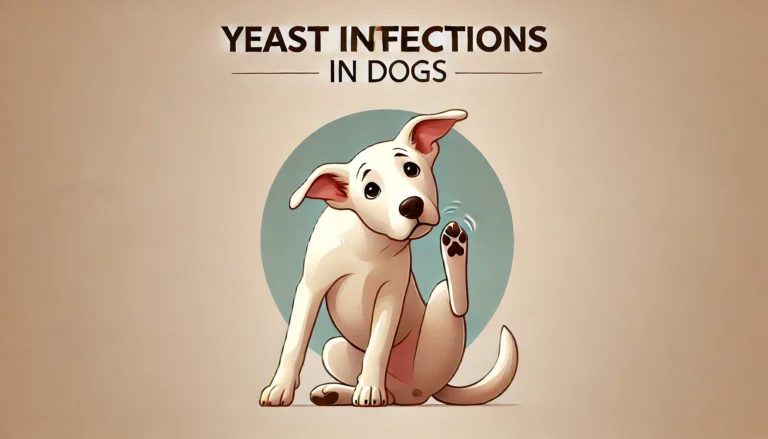5 types of dog eye discharge and when to go to the vet

Every dog owner might have noticed some form of eye discharge at some point. Whether it’s those pesky dog eye boogers in the morning or a worrying green discharge, knowing what’s normal and what’s a sign of something serious is crucial. This guide will navigate through the various types of dog eye discharge, offer insights into what they could mean, and advise when a vet visit is warranted.

1. Clear and Watery Discharge
Description
Clear and watery discharge, resembling tears, is common and often related to irritants like wind or allergens.
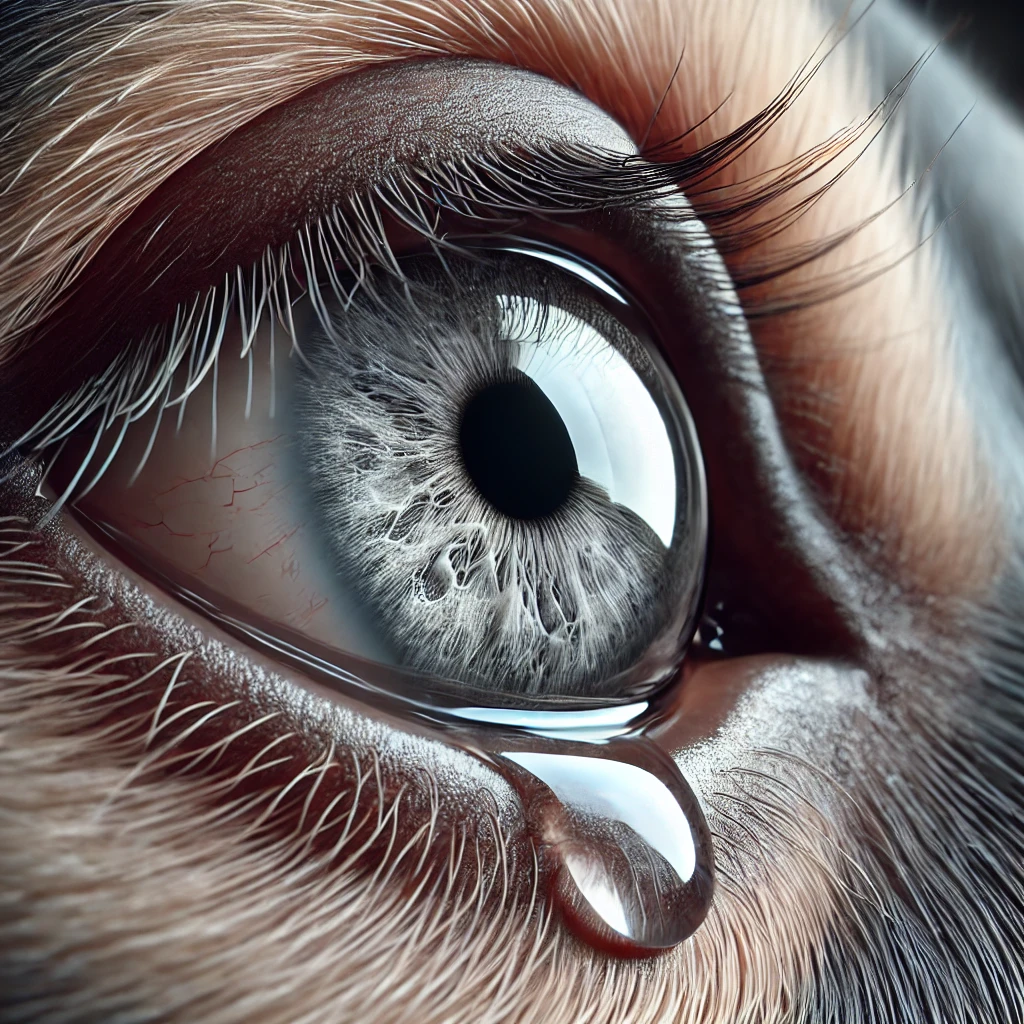
Common Causes
- Allergens: Leading to eye goo in dogs from exposure to pollen, dust, or smoke.
- Foreign bodies: Tiny objects causing dog eye discharge.
- Weather-related factors: Such as strong winds or dry conditions prompting watery eye discharge in dogs.
When to Visit the Vet
This dog eye discharge type isn’t usually alarming unless accompanied by redness, swelling, or persistent discharge, suggesting more serious issues like a blocked tear duct or allergy that requires veterinary attention.
2. Thick, Mucus-Like Discharge
Description
A thick, mucus-like discharge can be a symptom of eye conditions needing prompt care.
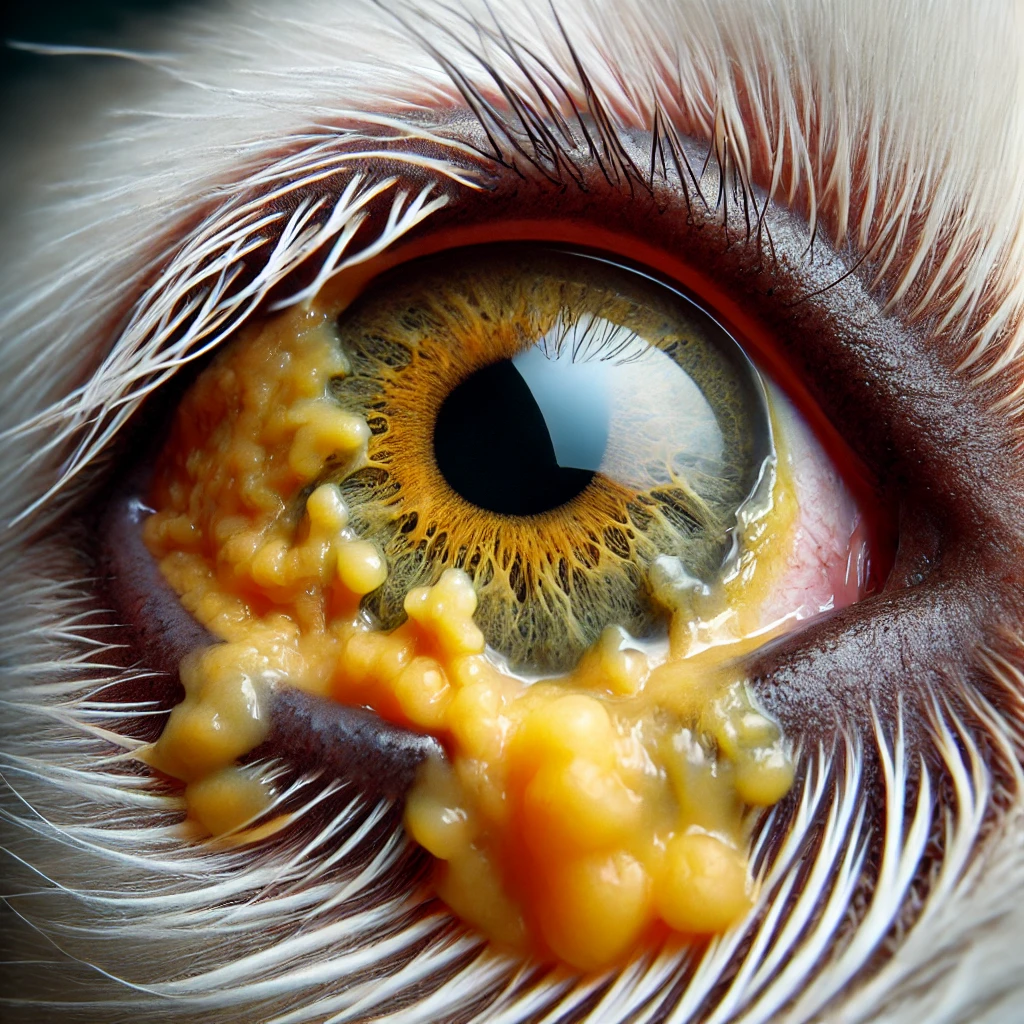
Common Causes
- Dry eye (Keratoconjunctivitis sicca): Not enough tears being produced, leading to eye mucus in dogs.
- Conjunctivitis: Inflammation causing eye discharge in dogs.
- Corneal disorders: Potentially serious issues needing intervention.
When to Visit the Vet
Thick discharge, especially if colored or persistent, needs vet intervention to prevent complications like infections, diagnosed through symptoms like dog eye goo or puppy eye discharge.
Tips
Anxiety in dogs often leads to a number of curable and non-curable diseases. It is important to know about a life saving medicine known to be trazodone for dogs.
3. Green or Yellow Pus-Like Discharge
Description
This color of discharge usually indicates a bacterial infection, requiring immediate veterinary care.
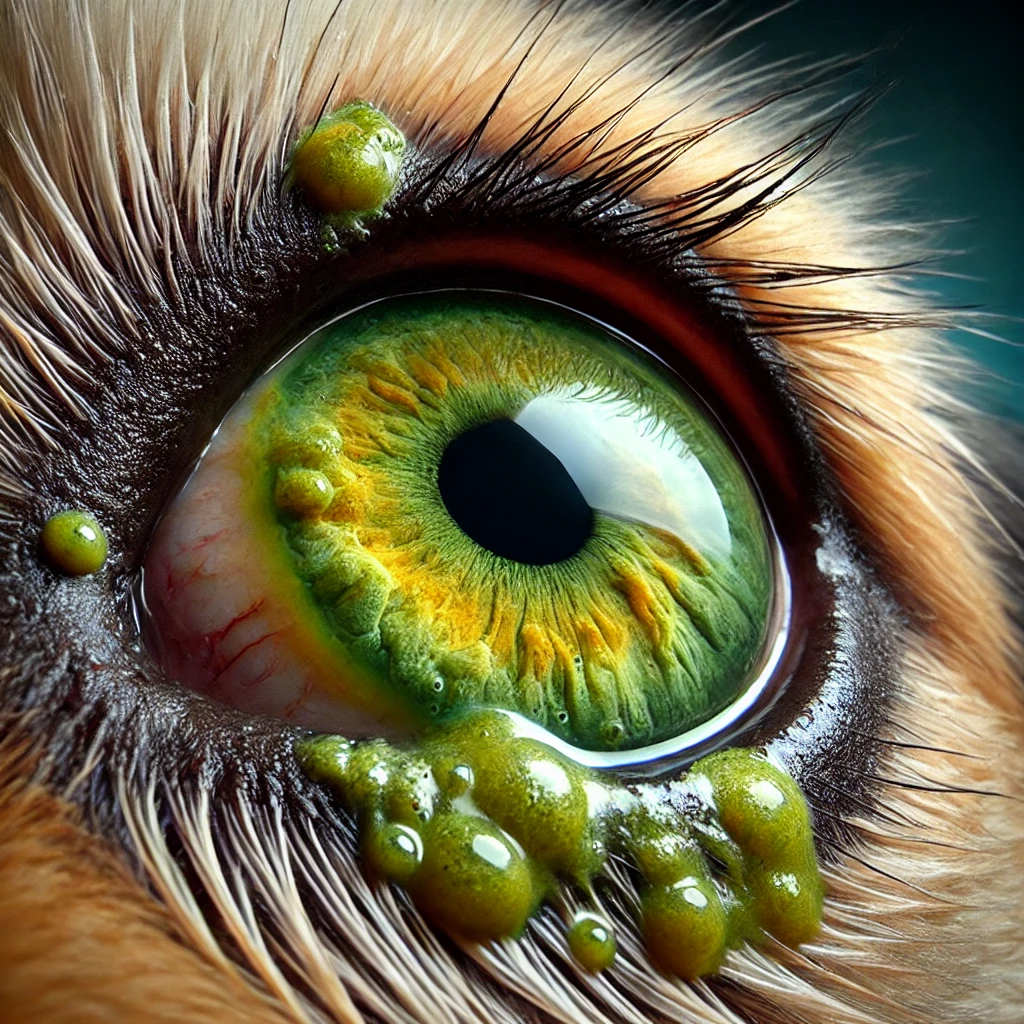
Common Causes
- Bacterial infections: Often severe and marked by green eye boogers in dogs.
- Severe conjunctivitis: Where standard dog eye boogers treatment isn’t enough.
Table: Symptoms and Treatments for Infections
| Symptoms | Treatments |
|---|---|
| Green discharge | Antibiotics |
| Yellow discharge | Eye cleaning, meds |
When to Visit the Vet
Dog eye discharge that is green or yellow and pus-like is an emergency, requiring vet consultation to prevent more serious health issues.
4. Reddish or Brown Discharge
Description
Often looking like dried blood, this type of discharge can be concerning and indicative of injury or infection.
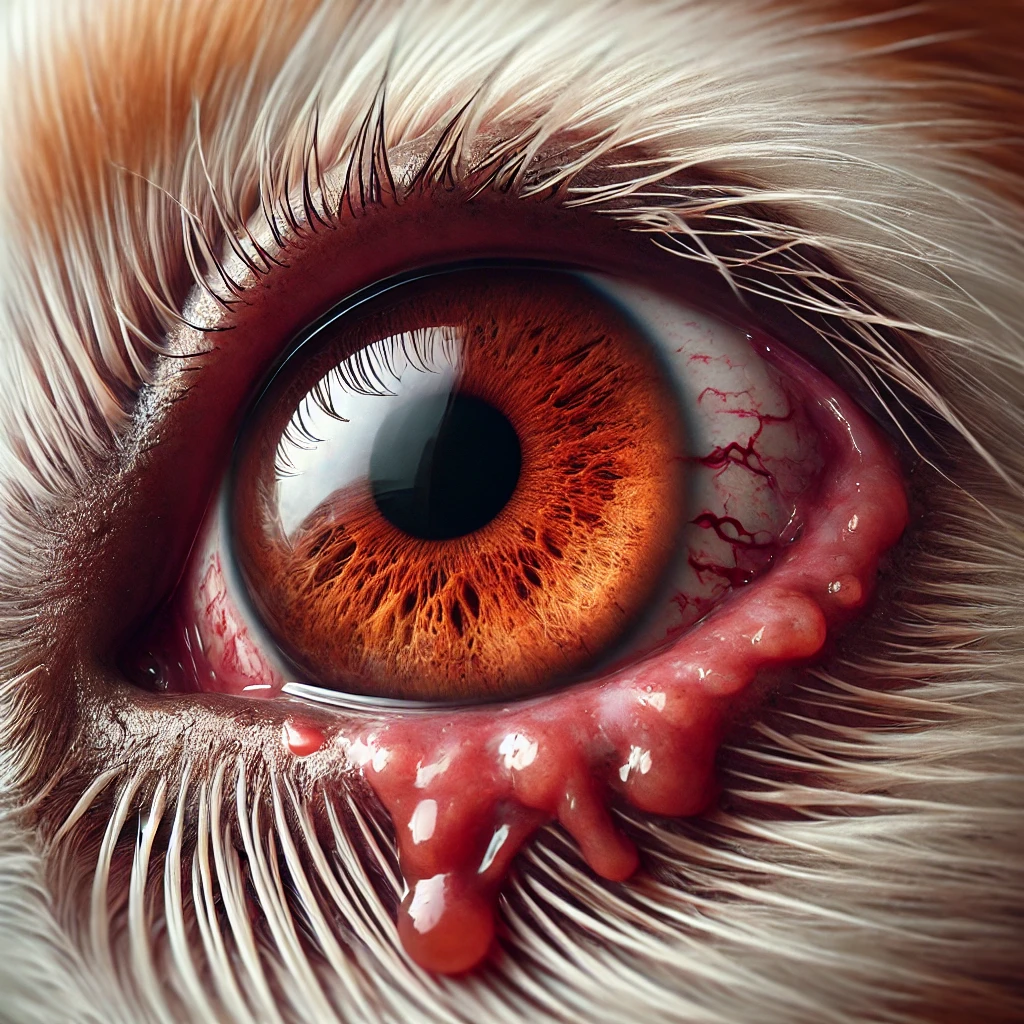
Common Causes
- Epiphora: Over-tearing causing brown discharge from dog eye.
- Injury: Direct trauma leading to red eye discharge in dogs.
When to Visit the Vet
When noticing dog eye discharge resembling blood or continuous brown staining, a vet check-up is necessary to rule out serious conditions or manage dog eye crust issues.
5. White-Gray Mucus
Description
Often seen in older dogs, this discharge type can indicate chronic issues.
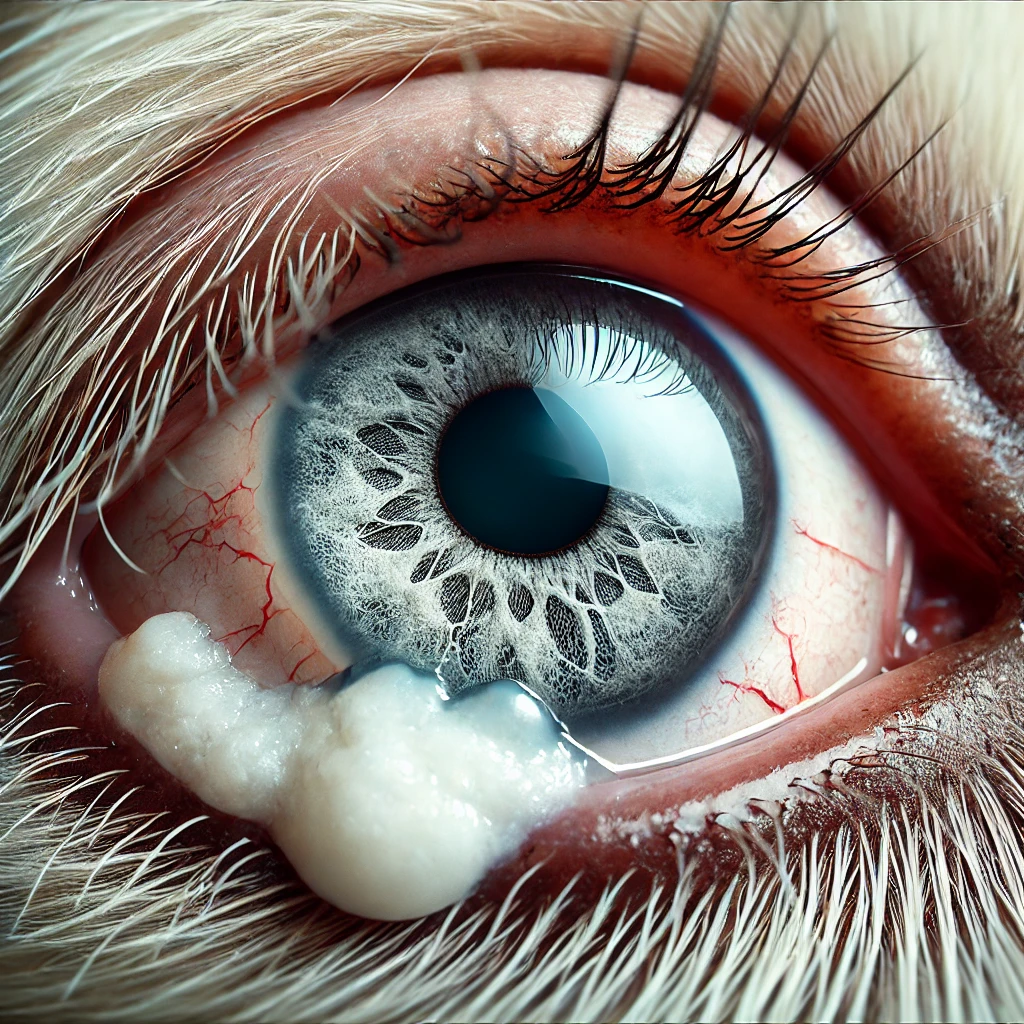
Common Causes
- Chronic dry eye: Leading to continuous white discharge from dog’s eye.
- Age-related changes: Common in senior dogs with eye discharge.
Graph: Incidence of White-Gray Mucus by Age
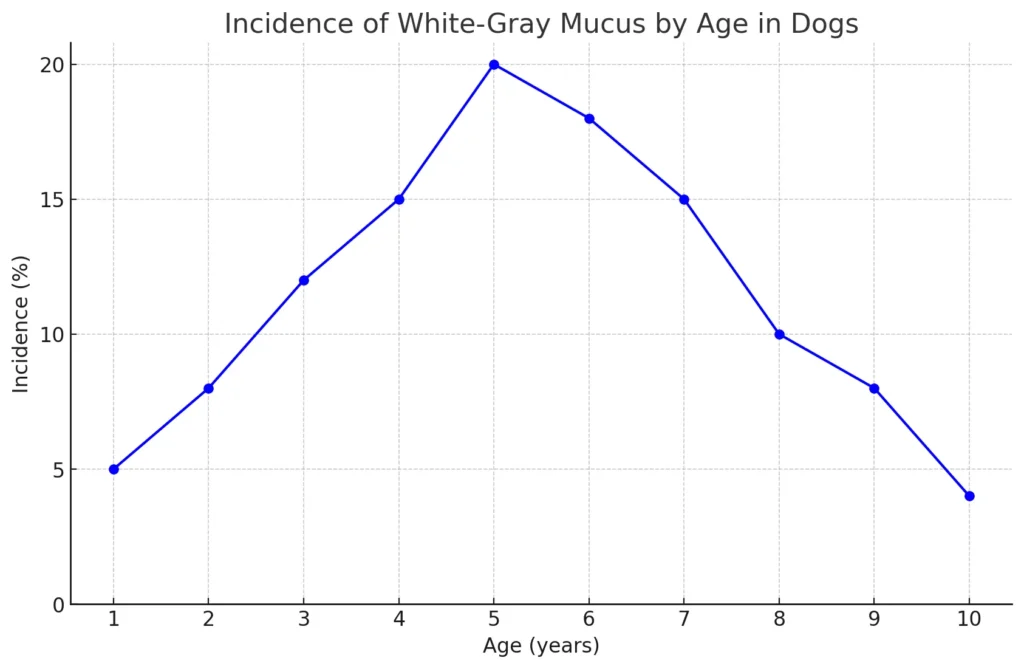
When to Visit the Vet
To visually summarize the guidance on when to visit the vet based on different types of dog eye discharge, we can create a table that outlines the key symptoms associated with each type of discharge and the recommended action. This table can serve as a quick reference for dog owners to decide when veterinary intervention is necessary.
Table: Guide to Dog Eye Discharge and Veterinary Visits
| Type of Discharge | Symptoms to Watch For | Recommended Action |
|---|---|---|
| Clear and Watery | Continuous discharge, redness, swelling, excessive scratching | Visit vet if persistent or symptoms worsen |
| Thick, Mucus-Like | Colored discharge, eye pain, light sensitivity | Visit vet immediately for diagnosis and treatment |
| Green or Yellow Pus | Pus-like consistency, foul smell, lethargy, appetite loss | Immediate vet visit required |
| Reddish or Brown | Appearance of blood, chronic staining, visual impairment | Immediate vet visit for potential serious condition |
| White-Gray Mucus | Consistent discharge, cloudiness, vision loss | Visit vet, especially if signs of chronic issue or aging |
This table helps to concisely convey when a dog’s eye symptoms necessitate a visit to the vet. For each type of discharge, it’s important to monitor the associated symptoms and act quickly when more concerning signs develop to ensure the best care for your pet’s eye health.
Conclusion on dog eye discharge
Understanding the different types of dog eye discharge is essential for maintaining your dog’s eye health. Regular check-ups, proper hygiene, and immediate action on abnormal signs can prevent serious issues and keep your dog comfortable. If you ever notice changes like dogs eyes watering, green eye goop in dogs, or excessive eye boogers in dogs, it’s better to err on the side of caution and consult your veterinarian.
FAQs on dog eye discharge
How do you treat eye discharge in dogs?
Treatment depends on the cause of the discharge. Generally, keeping the eyes clean with a damp cloth can help. For infections, allergies, or other conditions, a veterinarian may prescribe eye drops or ointments and, in some cases, antibiotics or antihistamines.
Why is mucus coming out of my dog’s eye?
Mucus discharge from a dog’s eye can be due to infections, allergies, foreign bodies, blocked tear ducts, or eye trauma. A vet visit is recommended to determine the exact cause and appropriate treatment.
What is the home remedy for dog eye infection?
A gentle saline solution can be used to clean the eyes. Mix 1/4 teaspoon of salt with 1 cup of distilled or boiled and cooled water. Use a clean cotton ball to wipe the eye gently from the inner corner outwards. Never use soap or chemicals.
Can a dog’s eye infection heal on its own?
Some mild eye infections can resolve on their own, but it’s risky to leave an eye infection untreated as it could worsen or lead to more serious complications. Consulting a veterinarian is advised.
How to clean a dog’s eye infection?
Use a clean, soft cloth dampened with warm water or a vet-recommended saline solution to gently wipe away discharge. Always wipe from the inside corner of the eye outward and use a fresh section of the cloth for each wipe.
Will salt water help a dog’s eye infection?
Mild saline solutions can help in cleaning the eyes and may soothe mild irritation, but they are not a cure for infections. Always check with a vet before using salt water to ensure it’s safe and appropriate for your dog’s condition.
Can I use human eye drops on my dog?
Never use human medications on your dog without veterinary guidance. Some ingredients in human eye drops can be harmful to dogs.
should I bathe my dog’s eye?
You can clean around your dog’s eye to remove dirt and discharge, but avoid getting soap or strong cleansers in the eye as these can be irritating. Use only water or vet-approved products.
What is a good homemade eye wash for dogs?
A simple homemade eye wash can be made with a saline solution. Dissolve 1/4 teaspoon of non-iodized salt in a cup of boiled and cooled water. Ensure the solution is completely cooled before using it to gently cleanse the dog’s eye area.


